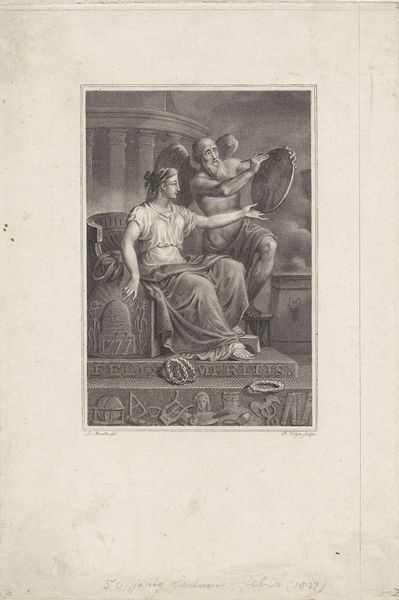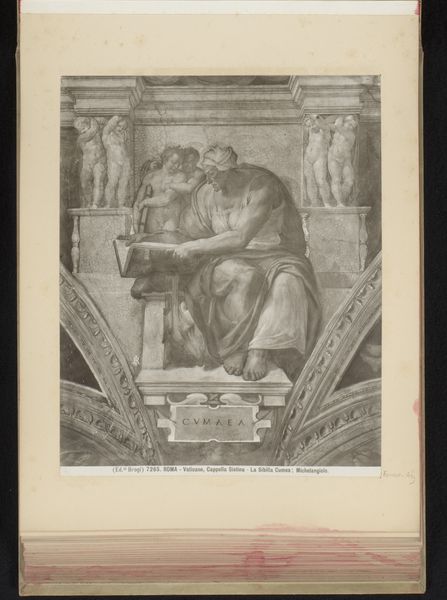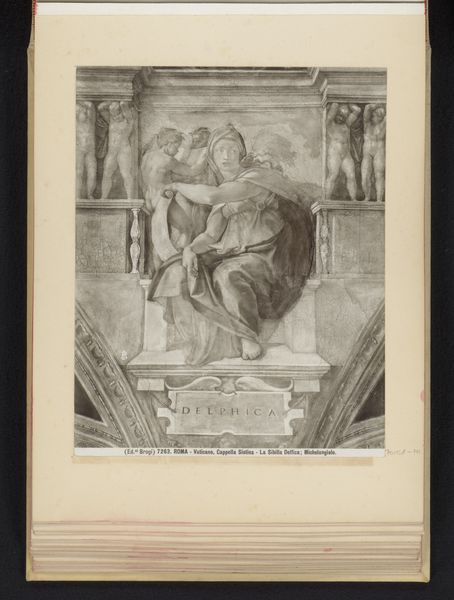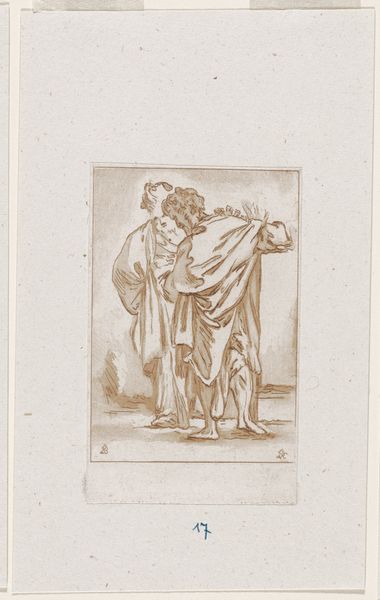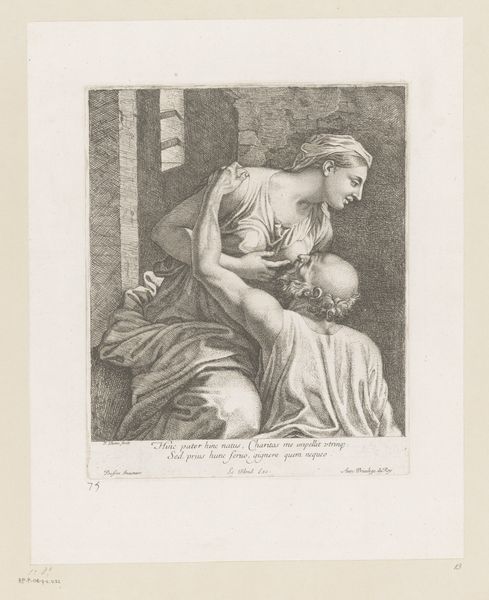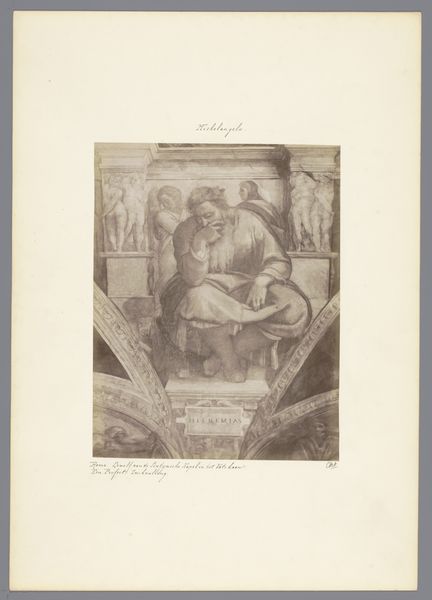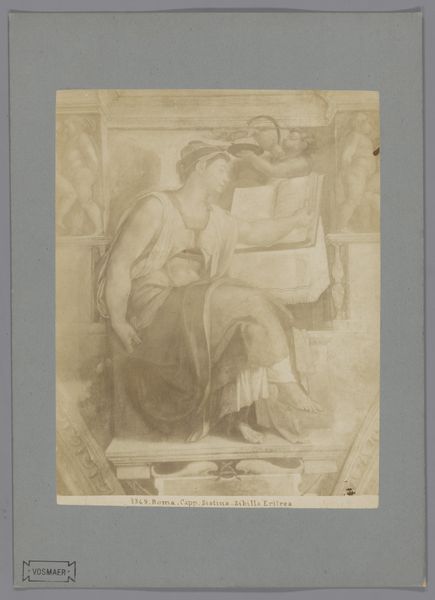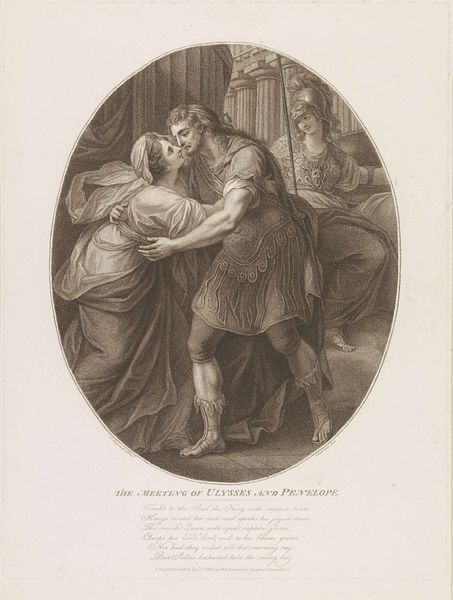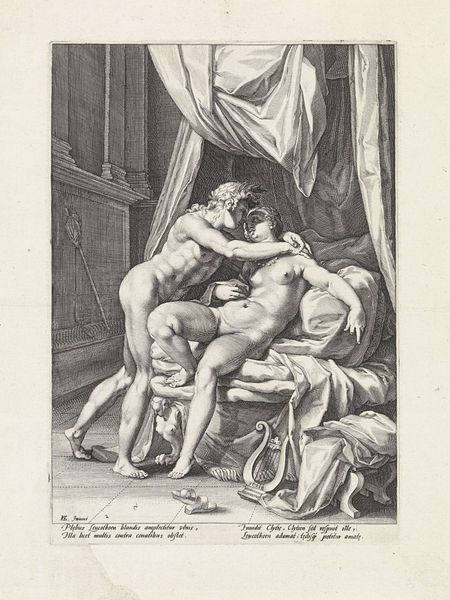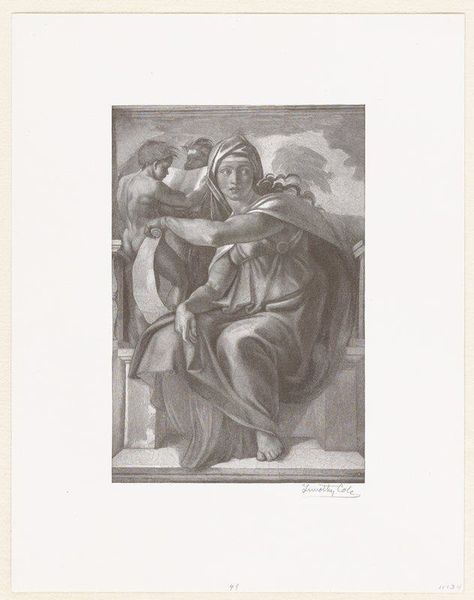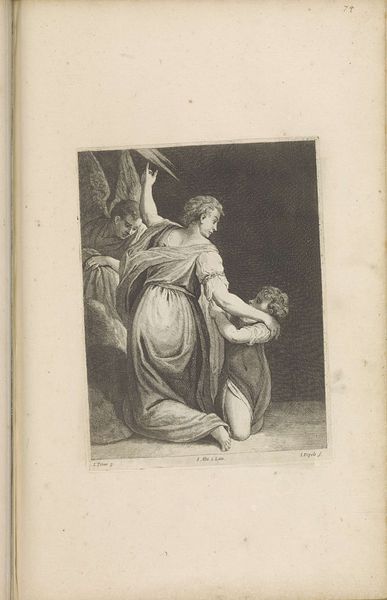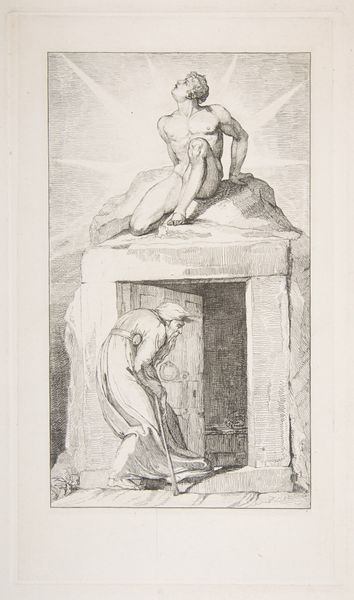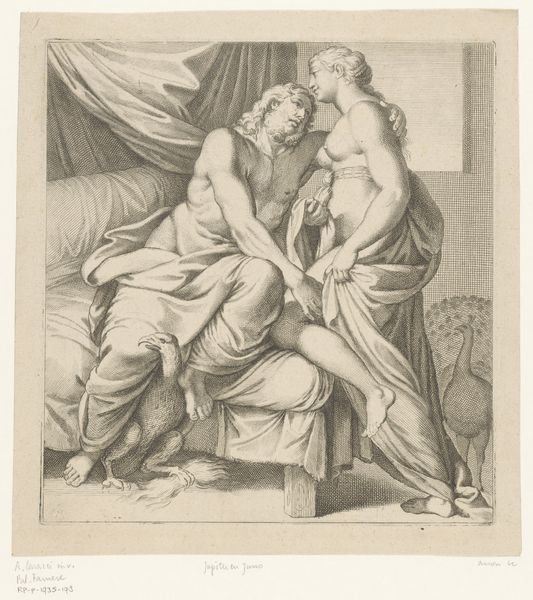
drawing, print, paper, woodcut, wood-engraving
#
portrait
#
drawing
# print
#
paper
#
11_renaissance
#
pencil drawing
#
woodcut
#
history-painting
#
wood-engraving
Dimensions: 8 x 5 3/8 in. (20.32 x 13.65 cm) (image)12 1/8 x 9 9/16 in. (30.8 x 24.29 cm) (sheet)
Copyright: No Copyright - United States
Curator: Looking at this wood engraving, I’m struck by how Timothy Cole captured the intensity of the Cumaean Sibyl in 1891. Her form emerges dramatically from the paper. What’s your immediate response to this work? Editor: It projects such a sense of contemplative authority, doesn't it? There's something formidable about her, even in this greyscale depiction. I can almost feel the weight of history and knowledge she embodies pressing down. I am also immediately drawn to how her muscular form juxtaposes with the tenderness of the two youthful figures standing behind her. Curator: Indeed. Cole made this engraving after Michelangelo’s famous fresco in the Sistine Chapel, as part of a larger project of re-presenting Old Master paintings to an American audience through new printmaking technologies. How might his project reinforce the cultural hierarchies already at play in the late 19th century art world? Editor: That’s key: we have to recognize these images circulated within a specific cultural context, not just as neutral copies. The late 19th century was obsessed with ideas of "genius" and artistic inheritance, and privileging certain masculine and Western artistic lineages served a particular social purpose. Think about how that focus might silence the labor that produced Cole’s edition and occlude contributions made by female artists. But the reproduction here may grant viewers greater proximity to classical knowledge by enabling them to buy copies of master works. Curator: Absolutely. Reproductions like this had a huge influence on disseminating artistic styles and, as you mentioned, certain cultural values. The choice of the Sibyl herself as a subject is loaded. Her wisdom comes from a mythical, almost oracular, connection to the divine feminine, but she is rendered here as hyper-masculine with bulging muscles that contrast sharply with the traditional representation of the female form in visual art. Editor: The fact that the artist chose a prophetic figure is compelling, especially when considering anxieties around shifts in gender and power roles when this artwork was created. In this sense, the image can offer a site where these conflicts might be mediated by associating changing expectations of men and women with a sacred past. Curator: So the print, itself, acts as a site of negotiation... it allows us to think critically about these tensions. Editor: Exactly, and that kind of critical engagement is why pieces like Cole’s engraving of the Cumaean Sibyl continue to fascinate and challenge us.
Comments
No comments
Be the first to comment and join the conversation on the ultimate creative platform.

